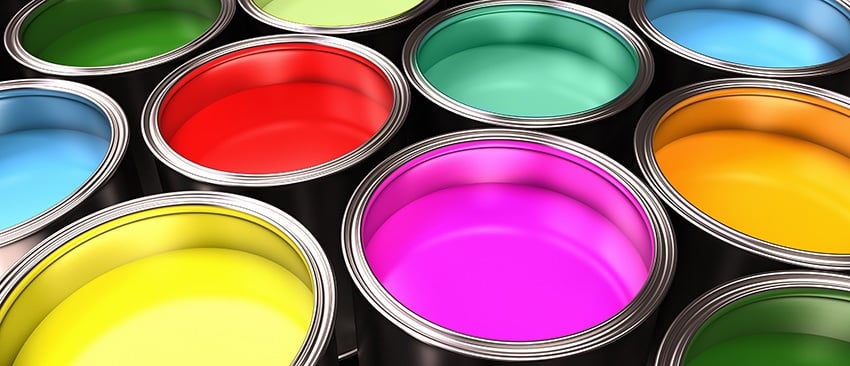On a hot summer day you have a glass of perfectly flavored, cold lemonade and it hits the sweet spot every time.
At an industrial pharmaceutical facility the senior operator sees everything is mixing the way it's supposed to and it's a great day.
What is the connection between these two scenarios? Of het nu om mengen van limonade of farmaceutische producten gaat, de dingen goed mengen kan het leven aangenamer maken. De mengtechnieken die worden gebruikt in deze twee situaties verschillen volkomen, hoewel de geproduceerde resultaten eender kunnen zijn.
Every application will need a different combination of agitation level, shear, suspension, dispersion, pumping capacity, and many other factors. It all depends on how you want your end product to turn out.
Keep reading for explanations of 6 common industrial mixing processes that can impact your equipment selection.
1. Miscible Liquids Blending
Simply put, miscibility is when liquids will completely dissolve into one another. Not only do the two liquids mix, but the mixtures are in many cases relatively stable to other mixtures. One example of miscibility at play is the combination of carbonated water and orange juice to create orange soda. Some orange soda producers only use sweeteners with the carbonated water and those ingredients also need miscibility for a perfect final product.
Blending miscible liquids often doesn't take high-shear or other aggressive mixing techniques because the two liquids are compatible on a molecular level. The flow of the content within the vessel is often enough to adequately mix the liquids.
Miscible liquids blending can include injectables, opthalmic products, and even mouthwash among many other products. Industrial mixers for this process should use light to moderate agitation depending on your specific ingredients and process.
2. Soluble Solid-Liquid Dissolution
This process is used on a frequent basis in your kitchen at home. Have you ever poured a Kool-Aid packet into a pitcher of water?
Mixing these two types of materials requires less aggressive agitation for the same reasons that miscible liquids are easy to blend. The amount of agitation required for solid-liquid dissolution depends on the solubility of the solid in the liquid.
Soluble solid-liquid dissolution often takes longer than blending two miscible liquids together because of the differing material states. Flow-driven mixing will likely be the best process if you need to dissolve a powder into a liquid.
3. Chemical Reaction Facilitation
Chemical reaction can be much easier to achieve in small batches than in large batches. The inefficiency of certain mixing techniques that are adequate for small batches can translate into poor results when the process is scaled up.
The Handbook of Industrial Mixing points out the importance of avoiding "channeling, bypassing, and dead zones" to avoid "poor reactor design and performance" (pg. xxxvii).
Flow is still the primary driver of reactions in many cases, but to ensure that proper mixing and reactions take place throughout the entire batch, you should use at least moderate agitation.
Heating or pressurization of the formulation may cause a chemical reaction. Any of these other mixing processes can be paired with chemical reaction depending on the specific needs of the end product.
4. Insoluble Material Suspension into Liquids
Products such as paint are creating using suspension of insoluble materials. Because pigments/dyes are often insoluble with other components of paint such as solvents like water, suspension can require a combination of flow- and shear-driven mixing.
According to the UNC Eshelman School of Pharmacy, suspensions are more chemically stable although they do give up physical stability when compared to solutions.
Suspended materials are more likely to settle, even when proper mixing techniques are used. The stability of the suspension depends on the components being used and how well they are mixed.
Products made with this process often require stirring or shaking before use. Vitamin formulations and nutraceuticals (i.e. protein bars) as well as other viscous solutions in personal care products such as lotions and shampoos are made by insoluble material suspension.
Again, the specific application will determine the specific mixing parameters, but suspension of insoluble materials will likely require moderate to aggressive agitation with shear.
5. Dispersing Solids into Liquids
What is dispersion? Think about your blender at home; the little blades don't mix liquids very well, but when you need to blend some fruit to make a smoothie, it is the perfect tool for the job. Dispersion works by having high shear near the blades of the mixer.
There are many mixing factors to consider when your product requires solids dispersion in liquids. Will you use a batch, semibatch, or continuous process? Is the solid likely to agglomerate and prevent necessary dispersion?
In many solid-liquid dispersion applications the solid will settle or agglomerate when the agitator speed slows down. It is important to know beforehand if the specific elements of your product will re-disperse when agitation is resumed.
Solids can settle on the bottom of the vessel if the agitator speed is too low, but sometimes this is a useful feature of mixing operation.
It all depends on how you want the end product to turn out. In the majority of cases aggressive, high-shear dispersion is the way to go.
6. Emulsifying Immiscible Liquids
Emulsification is an extremely common industrial process because it makes mixing formerly immiscible liquids a possibility.
This has many useful applications in the food industry such as milk, mayonnaise, and ice cream. Egg yolks contains lecithin which is a natural emulsifier used in industrial food applications and at home in your kitchen.
Even though emulsifiers are used in this process, more aggressive agitation techniques such as using a high-shear impeller are still necessary in many cases.



